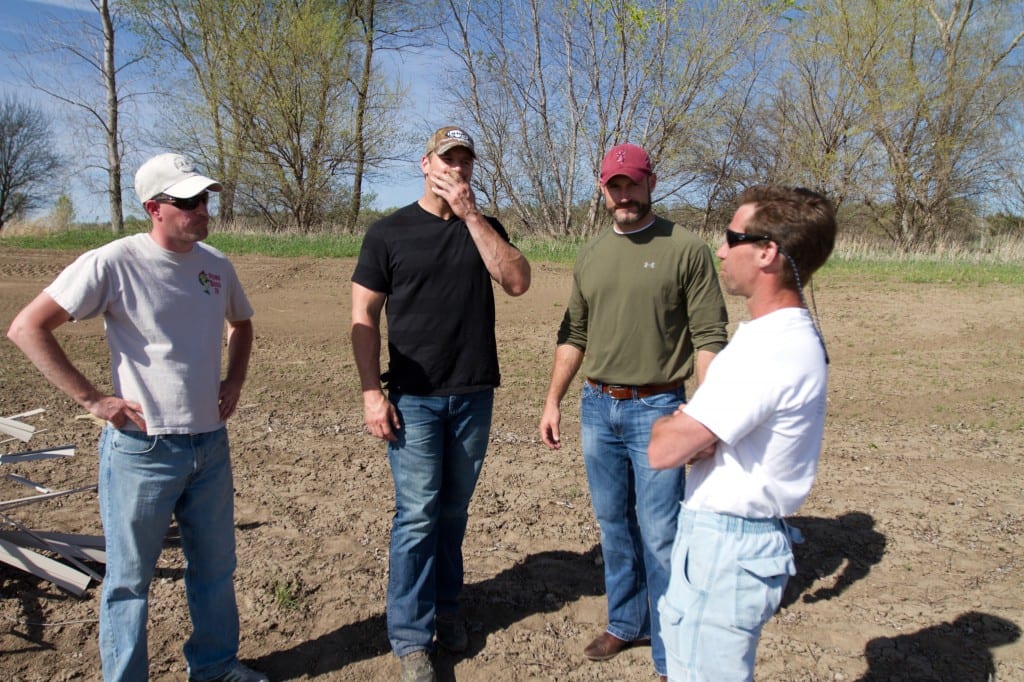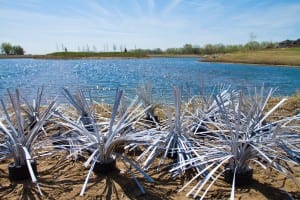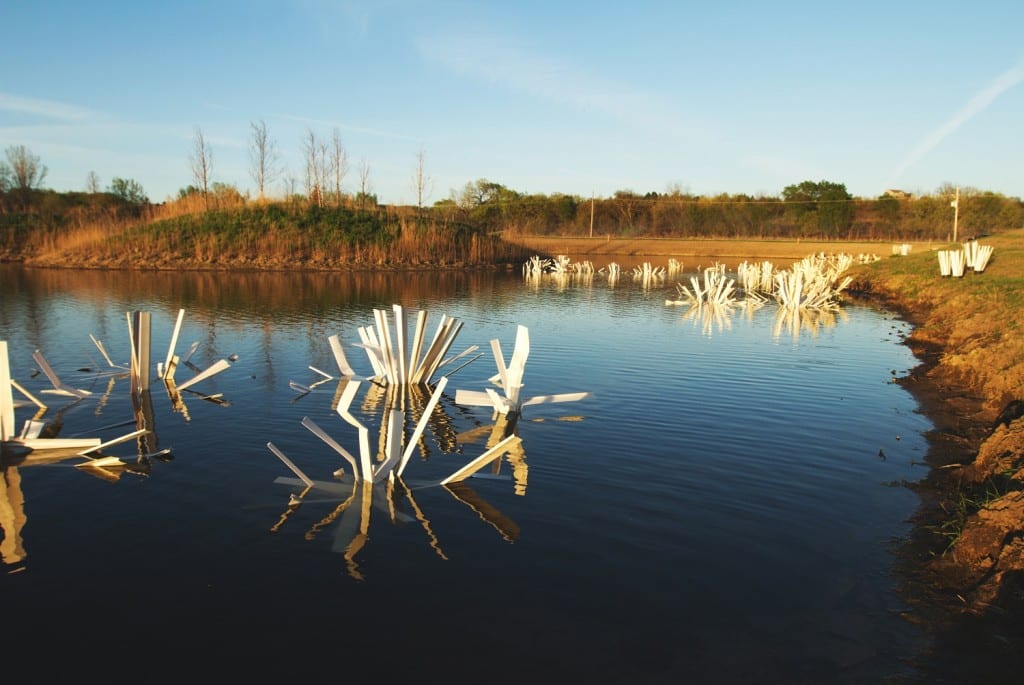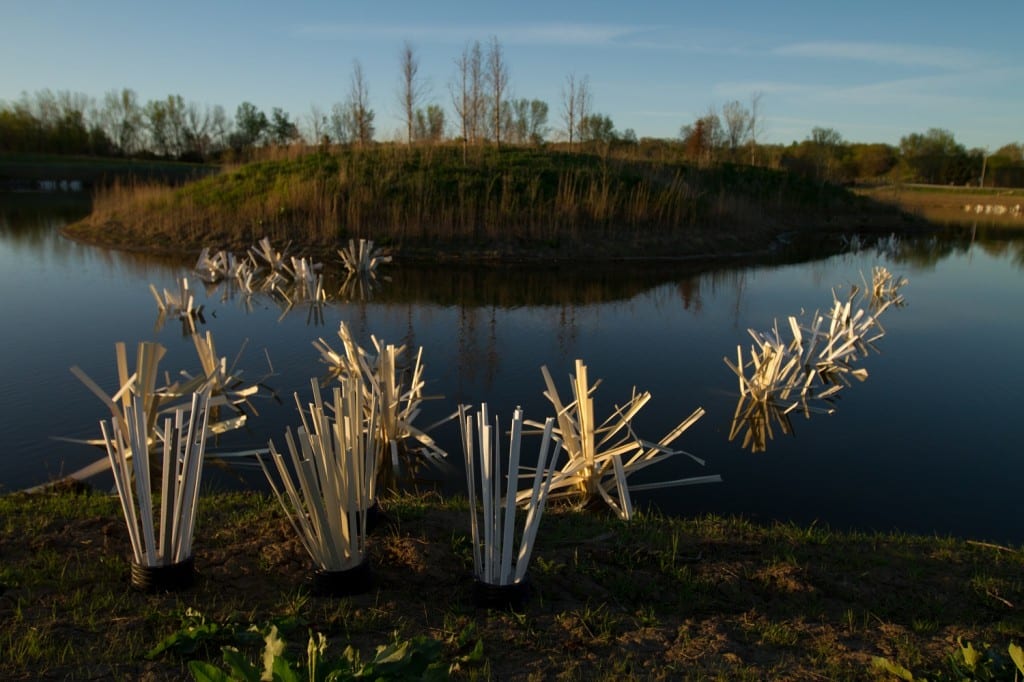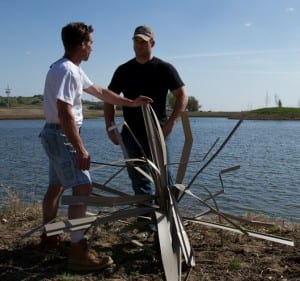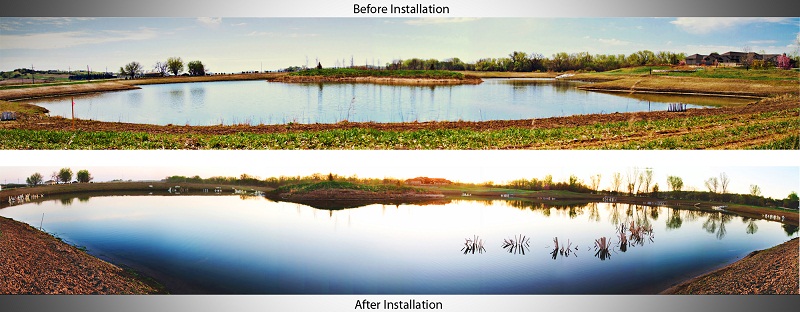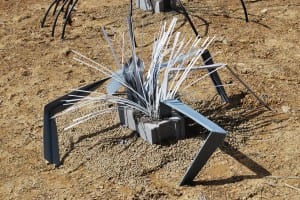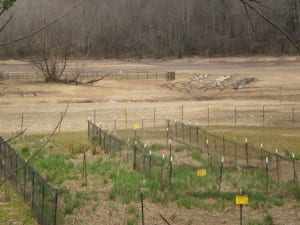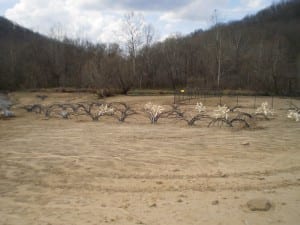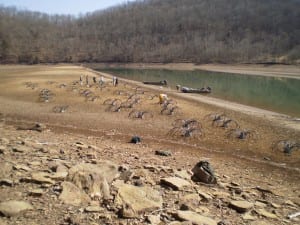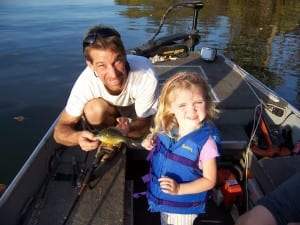| Vince Lovato Editor WASHINGTON, DC – Federal legislation now requires the Army Corps of Engineers to address the safety risks of placing dead trees in Lake Chelan to offset the environment damage allegedly caused by building a dock. The House Appropriations Committee passed a bill April 25 that requires the Corps to address the safety risks to recreational users of woody debris placed in Lake Chelan, according to U.S. Rep. Doc Hastings (R-Wenatchee). “Individuals wishing to construct a residential dock must pass through an exhaustive and very expensive permit process,” wrote boating safety instructor Russ Jones in a guest column to The Mirror. “Yet any agency wishing to deposit non-native species into the lake appear to be able to do so without the simplest of review processes. This was also the case with the use of submerged fruit trees. No prior study was conducted nor has there been any follow up study.” With the dramatic rise and fall of the water level through the different seasons, local residents have raised concerns about the possible movement of this woody debris and the safety hazards that it poses to boaters and other recreational users of the lake, Hastings said. “Washington residents have enjoyed waterskiing, swimming, boating and fishing in Lake Chelan for generations, and it is critical that it remain a safe environment for recreation,” said Hastings, who contributed language in the bill, “I am pleased that the Appropriations Committee acknowledges the need for the Corps to address the safety hazards of woody debris in Lake Chelan and reevaluate its use in the future so Lake Chelan can remain a safe place for Washington families to enjoy recreational activities. Additionally, I question the science and lack of monitoring of large woody debris as a mitigation requirement.” In January 2011, Chelan City Council members unanimously adopted a complicated resolution restricting the use of large woody debris as an environmental offset to construction projects such as boat docks over the lake. “In layman’s language, it would allow large woody debris but only low enough where it won’t interfere with boaters,” said council member Wendy Isenhart at that time. “It’s our responsibility to make policy here and we need an expression of our policy.” Chelan County Commissioners followed shortly thereafter with a similar resolution. Hastings’ language, which was included in the report accompanying the Fiscal Year 2013 Energy and Water Appropriations bill, requires the Army Corps of Engineers to report back to Congress on their efforts to address the safety hazards posed by woody debris in Lake Chelan, the liability of the Corps and private dock owners should a person or property be injured or destroyed by the woody debris, and whether woody debris should continue to be an acceptable option offered for mitigation within Lake Chelan. In March, Hastings, who has long questioned the need to mitigate the impact of docks on fish, submitted a request to Administrator Lubchenco of the National Oceanic and Atmospheric Administration for the science used to determine the impact of docks on fish species. Lubchenco has yet to respond to this request. One prescribed method is to anchor apple trees, referred to as large woody debris, near the shoreline to create artificial fish habitats. The Army Corps of Engineers and the State Department of Ecology created a prospectus that includes research allegedly proving this method would work in Lake Chelan. The agencies call the trees “large woody debris” and fear that every time a portion of the lake is covered by such things as docks, it has a negative impact on the ecology of the lake. Making up for that negative impact, by tethering dead trees near the lake shoreline to create habitat for fish, is called “mitigation.” |
Tag: fish spawning
Farmers protect fish habitat in their fields
Valley farmers protest heavy-handed measures to protect fish
More than 25 farmers from the Fraser Valley demonstrated outside the Department of Fisheries and Oceans (DFO) headquarters in downtown Vancouver Tuesday, saying their ability to farm is being hurt because endangered fish species have colonized ditches.
See the dozens of unique artificial fish habitat models, fish attractors and fish cover used at fishiding.com, the leader in proven science based, fish protection.
Farmers from Agassiz, Chillliwack and other parts of the Valley said fisheries officers are unreasonably restricting them from clearing or dredging ditches because they’ve been deemed fish habitat.
Ditches that aren’t kept clear can flood farmland, raise the water table and degrade the ability to grow crops or graze cattle, farmers said.
“I’m concerned for my farmland,” said Agassiz dairy farmer Gary Wikkerink, adding the allotted time each fall to conduct work in fish streams is too short.
Protesters brought two calves to the protest Tuesday to emphasize their point.
“It’s caused a lot of concern in the Agassiz area,” said Canadian Taxpayers’ Federation B.C. director Jordan Bateman, who organized the protest on behalf of farmers.
He said they want consistent enforcement of Fisheries Act rules that require setbacks and protection of fish-bearing streams.
“Fisheries officers seem to have a lot of discretion in how they interpret it,” he said. “That really bothers them.”
Bateman said farmers want to influence the outcome of Ottawa’s expected rewrite of the Fisheries Act, which environmental groups fear will seriously weaken fish habitat safeguards.
“It’s coming down to the usual battle between big business and environmental values,” he said. “Nobody is looking at how it affects small farm property owners.”
The Canadian Taxpayers’ Federation has launched a petition calling for Fisheries Act reform to support farmers.
Farmers aren’t the only ones affected.
One Agassiz home owner said a new 30-metre construction setback from a creek that runs through his land means he would not have space to rebuild if his house ever burns down.
“If they get the setback they want, it makes the my value of my place disappear,” Alan Callander said. “It makes it worthless.”
Wilderness Committee policy director Gwen Barlee said farmers may have some legitimate concerns over fishery issues.
“But we don’t want to be rolling back environmental standards,” she said. “If we can’t protect fish habitat, there’s no way to protect fish.”
Ecojustice staff scientist Susan Pinkus said recovery strategies launched by the federal fisheries department to protect two endangered species found in small Valley streams – the Salish sucker and the Nooksack dace – may have angered farmers, because the department mishandled communications with those affected.
She said only one per cent of the critical habitat of the Salish sucker is in ditches, although some streams also run through farms, triggering large setbacks.
Fisheries and Oceans Canada officials could not be reached for comment.
– files from Jeff Nagel
NFL Player Chris Kelsay Tackles Fishing Lake Project in Nebraska
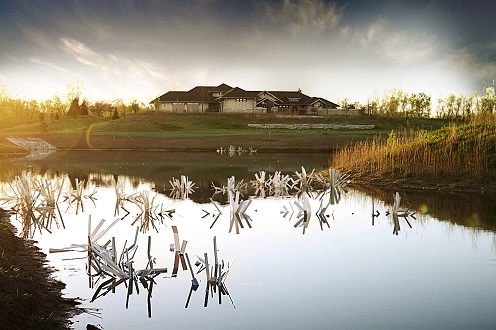
What kind of habitat helps the fish grow large and the water stay clear? Can you actually dictate where to cast your lure to find a bass lurking in the shaded cover like a defensemen reads a quarterback?
If you spend the time and effort to plan the design of your lake or pond from start to finish, you can achieve these goals and much more. Chris Kelsay, veteran linebacker/defensive end of the Buffalo Bills has a passion for more than just football. Chris not only loves to tackle running backs and wide receivers, but big bass are also on the hit list. Growing up in Nebraska, Chris has loved the outdoors all his life. When he’s not playing ball, he’s often talking fishing and hunting with his family and friends, planning his next adventure with his bow, firearms or fishing rods. Chris plays off the field with as much intensity as he does at work, stalking, sneaking and outsmarting his opponents with hard work and dedication.
Another NFL great that is no stranger to the outdoors is Aaron Graham, former Center for the Arizona Cardinals, Oakland Raiders and finishing up his career with the Tennessee Titans. These two guys have quite a bit more in common than playing ball in the NFL. Not only are they neighbors near Gretna Nebraska, but they both love to fish and hunt, having their own private lakes that they enjoy with their families and friends. Both these guys played college ball for the Nebraska Cornhuskers, as well as Chris’ brother Chad. Retiring from the NFL, Aaron now owns and operates his own company called “Premier Outdoor properties”, which specializes in large tract farm, ranch and recreational real estate throughout Nebraska, Kansas, Iowa and Missouri. Participating with Cabela’s Trophy Properties, his firm can help you find your dream hunting and fishing, farm and ranch, lake or river frontage, and large tract acreages, to meet any needs you may have.
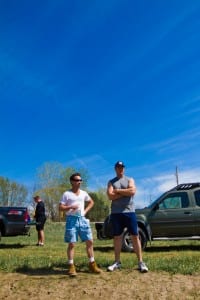
Aaron has had his lake stocked with an exceptional strain of bass, with catches to date over eight pounds by his son Cooper. With the lake being about seven years old, Aaron has a jump start on Chris with some experience in habitat, stocking and water quality. We met Aaron over a year ago, providing him with some of our artificial fish habitat products for his lake. Follow this link to read about aaron’s habitat project. The success he has had with our products, encouraged him to put Chris in touch with the team at Fishiding.com to discuss a plan for his first of two lakes, as it was getting ready to be filled to full pool. With a large well, levelor system, aeration and a stocking plan in place, we came up with a plan and design to meet Chris’ desire to create a personal, one of a kind fishery. The first lake Chris has on his property, at just over six acres, needs plenty of cover for the fish to spawn, hide and hunt within. A well known and respected fisheries biologist Bob Lusk of Pondboss.com, recommends at least 20% of the surface area of a lake or pond be provided in habitat.
See the dozens of unique artificial fish habitat models, fish attractors and fish cover used at fishiding.com, the leader in proven science based, fish protection.
With plans to include aquatic plants, wood and rock, we came up with an array of artificial habitat models to make up about 25% of the needed habitat for Chris’ first lake. We have always felt that a variety of natural and artificial habitat provides the diversity, all types of fish species need to utilize throughout the year. Like most things in life, everything in moderation seems to achieve the maximum efficiency and ultimate benefits for a fishery.
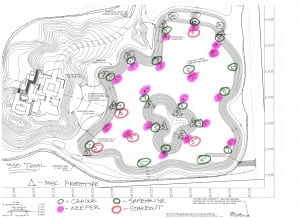
The plan we came up with provided an array of structure textures, sizes and shapes to best provide cover for fish spawning and growing habitats. A total of 350 individual habitat units were hand selected to best achieve Chris’ goals to create a trophy bass fishery. A key element to any habitat plan is to create a line of structure from shallow water spawning areas out to mid depth and ultimately deep water cover. This allows young fry to hide in fine, dense cover immediately after hatching, in the shallow water they are spawned in. As these young of the year fry develop and explore out to mid depth ranges, they need to have cover to utilize as they progress deeper. If this cover is not available, they get eaten before reaching preferred size by predator fish. It is imperative that these small fish are able to hide and grow larger to the 3″-5″ size before becoming forage for the game fish. A bass for instance, needs to eat 10 pounds of forage to put on just one pound in weight. If that bass eats the fry before they get large enough, he will eat them all up just to satisfy his hunger and desire to put on weight.
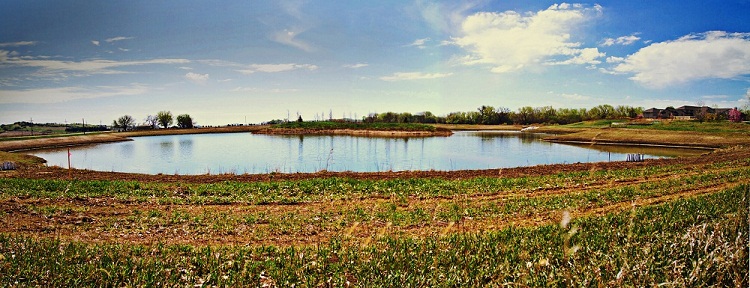
We put our plan together to deliver the structure and help Chris with the installation. Although artificial habitat only needs to be installed once, this was a large amount of structure to ship and install at one time. It was decided we would drive the almost 7200 pounds of habitat out in our own truck and trailer from our facility in northern Illinois. The 475 mile trip had us arriving by lunchtime on a Friday, with the hopes of finishing the installation late Saturday evening, for the return trip on Sunday.
Three of us set out at 4:00 a.m. Friday to achieve our goal. Our son Graham, an electronic media/photography major at Moody Bible Institute in Chicago, came to capture the project in high definition pictures and video and help with the installation process. Also along was our nephew Josh Fick, a starting player for the North Central college football team, over excited to meet and work with the NFL players. Meeting us there was Josh Milczski, a Nebraska native, writer for recycled fish.org, a pond boss moderator and Nebraska Fish and Game board member to lend a hand and share his knowledge. Also on hand to help was Chris and Chad Kelsay, as well as Aaron and Cooper Graham.
We unloaded all 350 units and spotted them around the lake per plan Friday afternoon and then when out for a well desreved Nebraska steak dinner to re-fuel for the big push on Saturday.
The weather was un-seasonably hot, with temps. in the low 90’s and full sun. None of us expected to be getting sun burn in march, let alone starting to find Morel mushrooms already. The turkey were gobbling on the roost as we set up for a long day of work, unfolding each unit and stocking them on the bank near their final resting place. Geese and ducks of all varieties, came in and out of the lake all day, giving us a show of the abundant wildlife in the area. There was about 2 feet of water existing in the lake from runoff and ground water level, an ideal situation to put our plan into motion.
Three Nebraska Boys and one flatlander plan the attack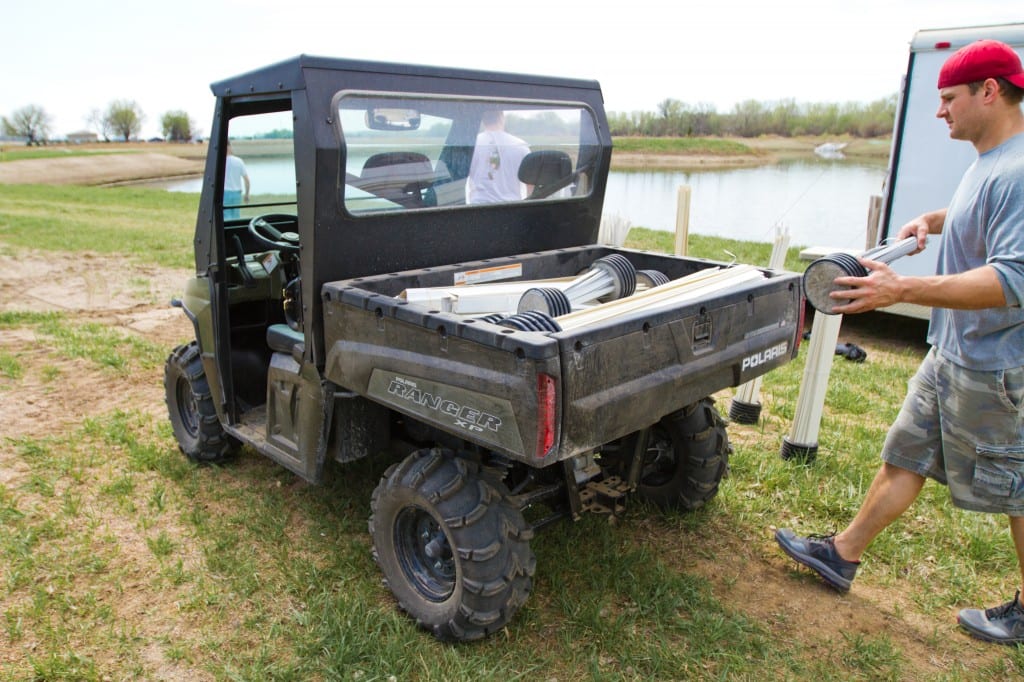
The “Kelsay express” saved lots of time
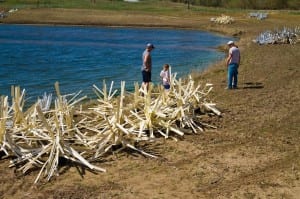
The Fishiding fish habitat products are all made from reclaimed PVC vinyl siding that was destined to be put in landfills. Over 50% of the material acquired has never been used on buildings and will last for many generations to come. This safe, inert substrate, works perfectly for underwater applications in fish habitat. Our main supplier of discarded siding comes from K. Hoving companies. This state of the art waste removal operation currently recycles an astounding 75% of the trash they collect. Re-use is the term they use to explain their company goals. See this story about their firm and the great things they are doing to help our environment. Add the cover and your fish will prosper, Go-Green and save the environment all at the same time.
All fishiding units come complete, ready to sink with no assembly or additional parts/tools needed. Simply open the box, bend to any desired shape and toss in the lake. Each unit sinks upright with the included “stump like” base. There is no incorrect or wrong shape, as diverse as Mother Nature. Artificial habitat products are being used all around the country, as biologists learn more about the many advantages they offer. Years of use from these structures allow anglers and pond/lake owners a snag free habitat for fish to utilize. Saving the environment, these fish attractors help conserve energy with no manufacturing process involved.
Cleaned, cut into various shapes, widths and sizes then cemented into just about any type of safe container, fishing groups are getting involved in creating new habitats lost from degradation and development. All of the fishiding models are available shipped loose as well as in a completed form. Customers can save money by purchasing loose pieces of the PVC in all varities and create their own custom designs by using their own container and cement. A special mixture of cement is also available to ensure a tight, fool proof bond to the vinyl. The pieces and models come in an array of colors, just like the colors available when siding your new home. After the algae and bio film begins to grow, they all take on a greenish/brown appearance.
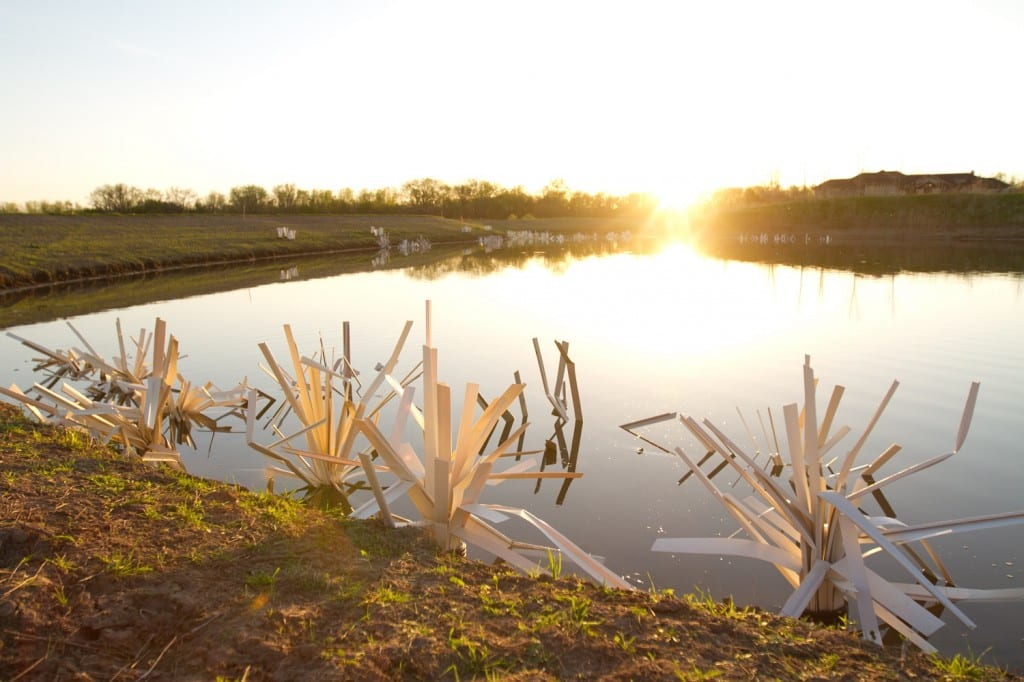
Groups like the B.A.S.S. Federation Nation have begun to incorporate Fishiding habitat products into their ongoing conservation efforts. Projects in West Virginia were recently completed with great success. Plans to work in New Mexico, South Dakota,Virginia and Texas are being put together currently with the conservation directors in those states. The B.A.S.S. Federation Nation leads the industry by example in conservation work with groups in all states and Canada promoting conservation and water quality issues world wide.
Lake and pond owners enjoy the ease of installation, with no need to ever replace. The limbs all have any holes or notches removed to make each unit snag resistant,unlike brush and Christmas trees. By providing shallow habitat for fry and forage fish, mosquitos can be almost eliminated in the area, as they feed on these pesty critters. Shallow habitat is the key to growing your own forage base, thus eliminating the need to constantly restock minnows to feed your game fish.
100 Keeper models were incorporated into the plan for deep water structure. These large units each boast over 62 square feet of surface area and allow predator fish to hunt and hide around. When opened and bent to shape, they cover a seven foot diameter and are best installed with about a foot of space in between. This allows fish to navigate through them, feeding and resting in the shade they produce. Bass prefer the dense cover and shade that these fish attractors provide.
Also part of the plan was to install 25 Stakeout structures, which are artificial stake beds, crappie and bluegill fisherman use a great deal in the south. These units stand 48″ tall and have an open grouping of individual “sticks” that the panfish prefer. Another 50 smaller prototype versions of these were installed in shallow areas for young of the year fish to navigate through as well.
See the dozens of unique artificial fish habitat models, fish attractors and fish cover used at fishiding.com, the leader in proven science based, fish protection.
With all the help and planning, we were able to meet our goal and finish installing all 350 Fishiding habitat units by sundown on Saturday. Chris welcomed us into his beautiful home and surrounding landscape. Although we had no time to hunt or fish while we were there, plans are being made to come back to install our habitat products in his second, five acre lake. With common goals of preserving our natural surroundings and creating a fantastic fishery, we are planning to spend some time together in the great outdoors with bows, guns and fishing rods in hand. New friendships have been made, stories of the hunt continue to be shared and the love of the great outdoors continue to be the catalyst for a common bond between men from all walks of life.
625 Scientists Oppose Fisheries Act Changes to Habitat Protection
The scientists believe that removing the habitat protections would jeopardise many important fish stocks and the lakes, estuaries and rivers that support them.
“Weakening habitat protections will negatively impact water quality and fisheries across the country, and could undermine Canada’s attempt to maintain international credibility in the environment.”
Since the plans were first revealed, they have come under constant criticism from the industry and others who believe that changes will facilitate approvals for oil sands projects like the Enbridge Northern Gateway pipeline. See the dozens of unique artificial fish habitat models, fish attractors and fish cover used at fishiding.com, the leader in proven science based, fish protection.
The letter states that fish habitat is the most common reason for species decline.
Concluding the scientists said that all species are of ecological value, referring to the government’s plans to only protect fish habitat for “fisheries of economic, cultural and ecological value.”
“It is critical that any changes do not jeopardise the environmental support system on which we and future generations depend.”
TheFishSite News Desk
WVBFN leads by example for the B.A.S.S. Federation Nation with Fishiding artificial fish habitat
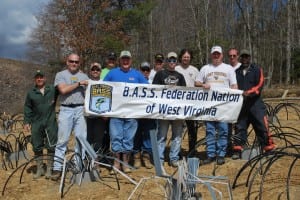 If you want to grow and sustain your fishery, then you have to expand the habitat for fish to reproduce and grow large. This is nothing new for the fisherman involved in the B.A.S.S. Federation Nation of West Virginia. These guys have been involved in habitat restoration projects from the beginning, leading the way for future generations of fish and fisherman to grow and prosper.
If you want to grow and sustain your fishery, then you have to expand the habitat for fish to reproduce and grow large. This is nothing new for the fisherman involved in the B.A.S.S. Federation Nation of West Virginia. These guys have been involved in habitat restoration projects from the beginning, leading the way for future generations of fish and fisherman to grow and prosper.
A few short weeks ago, Jerod Harman, Conservation Director for the West Virginia B.A.S.S.Federation Nation, contacted the owner of Fishiding artificial habitats. Jerod saw the benefits of these reclaimed PVC structures and asked about working together to help them in their ongoing efforts to improve fish habitat on a few of their local lakes.
See the dozens of unique artificial fish habitat models, fish attractors and fish cover used at fishiding.com, the leader in proven science based, fish protection.
Fishiding habitat products had been recently been awarded at the Bassmasters Classic Conservation Summit in Shreveport,LA. Jerod, a long time steward of B.A.S.S knew these reclaimed structures would help achieve their habitat goals, complimenting the “Spider Blocks” he is so well known for installing. Jerod has a long time relationship with local Corps of Engineer leaders and the DNR in his outstanding state. Having worked with them for many years on multiple restoration projects, his reputation is well known for rounding up the troops and getting the job done in an utmost professional and timely manner. Field and Stream magazine has also highlighted his work in a recent issue, honoring him as one of our Nation’s “Hero’s of Conservation” for his habitat work.
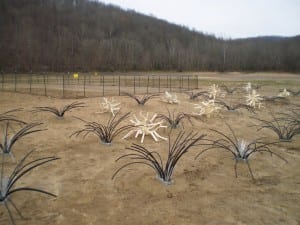 When the local lakes are drawn down for the winter, Jerod and his dedicated team of volunteers spring into action when most of us are sitting by a warm fire. The exposed lake bed gives them the opportunity to get right into the fishes’ favorite breeding grounds and begin to work their magic. In past years, the group has braved snow, ice and freezing temperatures to work on structures to provide habitat that is either lacking, has deteriorated or washed away by flooding. The group typically works with artificial structures that will last for many years to come, since they never rot or decompose like other types of natural products. They also install native plants and protect them from predators until they have a chance to take hold.
When the local lakes are drawn down for the winter, Jerod and his dedicated team of volunteers spring into action when most of us are sitting by a warm fire. The exposed lake bed gives them the opportunity to get right into the fishes’ favorite breeding grounds and begin to work their magic. In past years, the group has braved snow, ice and freezing temperatures to work on structures to provide habitat that is either lacking, has deteriorated or washed away by flooding. The group typically works with artificial structures that will last for many years to come, since they never rot or decompose like other types of natural products. They also install native plants and protect them from predators until they have a chance to take hold.
Jim Summers is another name synonymous with habitat. Jim has worked on these types of projects for many years and now takes credit for the fine photos we have to enjoy. Jim is always on hand to help, as well as get the shots as the work progresses. Some of the WVDNR staff put on their wet suits on their own time to get the underwater pictures of the spider block structures after they had time to age. The proof is in the pictures, showing not only bass, but forage species utilizing the new habitat the group has provided and installed.
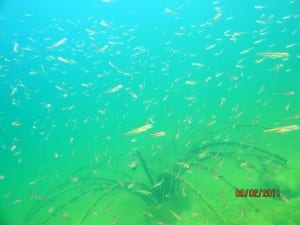
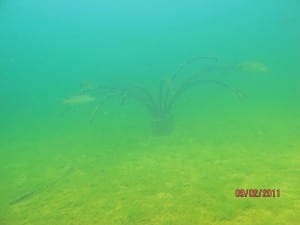 The key to the effectiveness of artificial fish habitat, is the ability to grow bio film or periphyton. This film forms on inert substrates and begins the cycle of life which attracts invertebrates and larger fish to feed on. Other aspects that hold these types of structure units above the rest is that they don’t decompose, therefore not using up important dissolved oxygen from the water column as they rot. Bio film is proven to be the highest form of fish food, better than any commercial feeds on the market today. The bio film consumes over abundant nutrients like phosphorous, brought in by runoff which causes excessive algae growth in many lakes and ponds. The fish then eat this high energy food and grow even larger, at an unmatched rate to boot! A company leading this technology is Floating Islands International,Inc out of Montana. These islands made from recycled plastics form a matrix of fibers, creating maximum surface area to grow this bio film. Not only do these products feed the fish, but they cleanse the water and drastically improve water clarity.
The key to the effectiveness of artificial fish habitat, is the ability to grow bio film or periphyton. This film forms on inert substrates and begins the cycle of life which attracts invertebrates and larger fish to feed on. Other aspects that hold these types of structure units above the rest is that they don’t decompose, therefore not using up important dissolved oxygen from the water column as they rot. Bio film is proven to be the highest form of fish food, better than any commercial feeds on the market today. The bio film consumes over abundant nutrients like phosphorous, brought in by runoff which causes excessive algae growth in many lakes and ponds. The fish then eat this high energy food and grow even larger, at an unmatched rate to boot! A company leading this technology is Floating Islands International,Inc out of Montana. These islands made from recycled plastics form a matrix of fibers, creating maximum surface area to grow this bio film. Not only do these products feed the fish, but they cleanse the water and drastically improve water clarity.
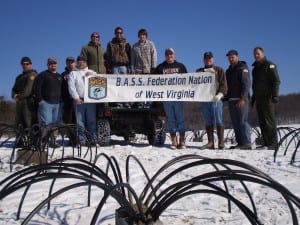 Generally, the group of volunteers will install 50-75 habitat units per outing. Much of the supplies are donated by local companies, providing pipe, cinder blocks and cement. Some of the funds are received from state and federal grants, to provide plant stock and professional help as well. The bulk of the effort comes from volunteer labor, provided by Jerod and his dedicated group of conservation minded members. Without folks like these, our grand kids would not have the opportunity to enjoy what we have been so blessed to enjoy for so many years.
Generally, the group of volunteers will install 50-75 habitat units per outing. Much of the supplies are donated by local companies, providing pipe, cinder blocks and cement. Some of the funds are received from state and federal grants, to provide plant stock and professional help as well. The bulk of the effort comes from volunteer labor, provided by Jerod and his dedicated group of conservation minded members. Without folks like these, our grand kids would not have the opportunity to enjoy what we have been so blessed to enjoy for so many years.
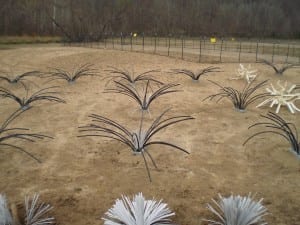 The most recent projects involving the donated fishiding structures were put in Lake Summersville and Sutton Lake. These two area lakes will benefit in many ways from the Federation’s efforts. Spider Blocks, along with Keeper, Safehouse and shallow Cradle models all work together near new bullrush and arrow anum plantings to provide ultimate spawning areas.
The most recent projects involving the donated fishiding structures were put in Lake Summersville and Sutton Lake. These two area lakes will benefit in many ways from the Federation’s efforts. Spider Blocks, along with Keeper, Safehouse and shallow Cradle models all work together near new bullrush and arrow anum plantings to provide ultimate spawning areas.
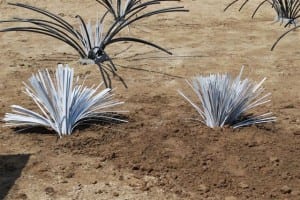 1800 plants were added to Sutton lake by volunteers from the WVBFN as well as local DNR officials and staff. David Truban, a West Virginia DNR commisioner was also on hand to bend a few Fishiding structures too. Jerod told Dave, “Just think like a fish and have at it” He was pleased to put his twist on making one into a fantastic looking block! ” I honestly believe that this project will make huge a difference in this area of the lake because of the diversity of habitat that they will have at theit disposal. “If I were a bass, this is where I would want to call home”
1800 plants were added to Sutton lake by volunteers from the WVBFN as well as local DNR officials and staff. David Truban, a West Virginia DNR commisioner was also on hand to bend a few Fishiding structures too. Jerod told Dave, “Just think like a fish and have at it” He was pleased to put his twist on making one into a fantastic looking block! ” I honestly believe that this project will make huge a difference in this area of the lake because of the diversity of habitat that they will have at theit disposal. “If I were a bass, this is where I would want to call home”
“I really don’t see us doing projects in the future without artificial structures mixed in. No matter what the weather conditions are, they are an investment that will be there through freezing, drought, high water, just about anything barring a massive flood in which they would be washed out. And even then, they will just be redistributed for cover somewhere else. ” Jerod Harman.
Working with the WVBFN has been an absolute pleasure. Cribs were sent out to the guys early in the week and by the weekend, they were in place ready for the water to rise. Others can take note of the dedicated members, the communities involvement and the ongoing positive relationship formed with the local governing agencies. These fish will prosper from their combined efforts, ultimately providing fisherman with a vast variety of cover and species to target.
For more information about the WVBFN and it’s affiliates you can go to their website at http://www.wvabassfederationnation.com . To get involved in their habitat efforts you can contact Jerod Harman at jharman12@cebridge.net
Fish Habitat Key Part of B.A.S.S.Summit
B.A.S.S. News Announcement: Conservation Summit Deemed ‘Huge Success’
 Awesome. Tremendous. Terrific. That’s the way that state conservation directors (CD) for the B.A.S.S. Federation Nation summed up their experience at the recent Conservation Summit in Shreveport, La.
Awesome. Tremendous. Terrific. That’s the way that state conservation directors (CD) for the B.A.S.S. Federation Nation summed up their experience at the recent Conservation Summit in Shreveport, La.
Staged during Bassmaster Classic Week, the event featured 2 ½ days of presentations and discussions on issues of concern to bass anglers nationwide. Fisheries experts from universities also attended, as did fish chiefs and biologists from state and federal agencies.
“The Conservation Summit was terrific,” said Scott Sowell, veteran CD from Maryland. “Noreen (National Conservation Director Noreen Clough) did a fantastic job putting it together, and I left fired up to spread the word on keeping bass alive!
“It was great interacting with CDs and fisheries biologists from all over the country. I learned quite a bit about conservation issues and practices in other states and steps they take to protect the fishery.”
Clough called the Summit “a huge success,” but wanted no credit for it being so. “I was impressed with the number of states who recognized the value of this and attended,” she said.
“And it was capped off by a variety of academics like Dave Philipp from the University of Illinois, Mike Allen from the University of Florida and Jeff Koppelman from the Missouri Department of Conservation. They stimulated thought and conversations.”
Those three joined Gene Gilliland from the Oklahoma Department of Wildlife Conservation and others as presenters on Day 2 of the event, billed as a Fisheries Management Workshop.
“We talked about the state of the science on black bass issues,” Gilliland said. “We made presentations on some of the more controversial issues, such as fishing for spawning bass, to give the CDs a feel for what is going on, and then we had question-and-answer time.”
Based on the presentations and follow-up breakout sessions, attendees then identified major management issues for black bass fisheries. They include the following:
- Fish care during tournaments, with pro anglers serving as role models.
- Introduction of native and non-native species, including anglers who illegally move fish.
- Large-scale habitat projects, with federal involvement.
- Current and future water wars, and the need for anglers to partner with U.S. Forest Service, the U.S. Fish and Wildlife Service (FWS) and the states to ensure allocations for fisheries.
- Fostering better relationships with fisheries agencies.
The Summit also included national and state legislative updates from Gordon Robertson of the American Sportfishing Association and Chris Horton, Mid-States Coordinator for the National Assembly of Sportsmen Caucuses. The two also led a discussion on working with legislators.
“You have to engage politically because management of our natural resources often is political instead of biological,” Horton said.
On the Summit’s final day, Gilliland explained the process behind fisheries management, and fish chiefs provided the “state perspective” on building partnerships.
See the dozens of unique artificial fish habitat models, fish attractors and fish cover used at fishiding.com, the leader in proven science based, fish protection.
Additionally, representatives from the FWS talked about that agency’s programs and the 75th anniversary of the Sportfish Restoration Program (also known as Wallop-Breaux), which provides millions of dollars annually for state fisheries management through excise taxes on fishing gear.
2012 Bassmaster Classic Official Sponsors: Toyota, Bass Pro Shops, Berkley, Evan Williams Bourbon, Humminbird, Mercury, Minn Kota, Nitro Boats, Skeeter Boats, Triton Boats, Yamaha
2012 Bassmaster Classic Supporting Sponsor: Carhartt
About B.A.S.S.
For more than 40 years, B.A.S.S. has served as the authority on bass fishing. The organization advances the sport through advocacy, outreach and an expansive tournament structure while connecting directly with the passionate community of bass anglers through its Bassmaster media vehicles.
The Bassmaster brand and its multimedia platforms are guided by a mission to serve all fishing fans. Through its industry-leading publications — Bassmaster Magazine and B.A.S.S. Times — comprehensive website Bassmaster.com and ESPN2 and Outdoor Channel television programming, Bassmaster provides rich, leading-edge content true to the lifestyle.
The Bassmaster Tournament Trail includes the Bassmaster Elite Series, Bass Pro Shops Bassmaster Open Series, Carhartt Bassmaster College Series, Cabela’s B.A.S.S. Federation Nation events and the ultimate celebration of competitive fishing, the Bassmaster Classic.
B.A.S.S. offers an array of services to its more than 500,000 members and remains focused on issues related to conservation and water access. The organization is headquartered in Birmingham, Ala.By Staff Writer
Rehabbed Habitat Hosts Tournament
For a winter that’s been unusually warm, it was no surprise when 2,000 people showed up at a frozen lake near Ladysmith, Wis., for a fishing tournament.
 A young angler won the first-place prize of $1,000 after catching a 30-inch pike. (Photo By: John Thiel, Dairyland Power Cooperative)
A young angler won the first-place prize of $1,000 after catching a 30-inch pike. (Photo By: John Thiel, Dairyland Power Cooperative)The Ladysmith Lions Club organized the city’s first annual Ice Fishing Tournament, which followed a major fish habitat enhancement project on Lake Flambeau.
“Since we utilize natural resources for our business, we are strongly committed to giving back to the environment through high-impact stewardship activities, such as the fish habitat project,” said Katie Thomson, senior communications specialist for Dairyland Power Cooperative.
The Feb. 26 tournament raised $25,000. Profits from the event will be distributed to local food pantries, lake-habitat projects and Lions Club programs.
Enhancing the reservoir’s fish habitat was no easy task. Led by the Rusk County Wildlife Restoration Association and supported by the La Crosse-based G&T, the multiphase project began in 2007.
The phases included rehabbing the deep-water area, improving shoreline, and closing the lake for six months. A 30-foot drawdown was set up to drain the lake, which took seven weeks to refill once the repairs were complete.
During construction workers placed more than 150 deepwater fish structures, made of rock, logs and brush, on the lakebed. Seventy-five more fish structures were built and placed along the shoreline.
Numerous pine trees were cut and anchored to the lakebed and placed on the shoreline. This winter, whole pine trees were weighted at the base and sunk vertically in deep water areas.
See the dozens of unique artificial fish habitat models, fish attractors and fish cover used at fishiding.com, the leader in proven science based, fish protection.
 Fishermen stocked the fish board with pike, walleye, crappie, perch and bluegill after a day of fishing. (Photo By: John Thiel, Dairyland Power Cooperative)
Fishermen stocked the fish board with pike, walleye, crappie, perch and bluegill after a day of fishing. (Photo By: John Thiel, Dairyland Power Cooperative)“Restoration really benefitted the lake’s health, which will in turn benefit sports enthusiasts,” said John Thiel, senior environmental biologist for Dairyland.
“The panfish species are becoming more abundant and thriving and the lake’s ready to be fished,” he said. “We provided some real quality recreational activities with the hydro reservoir.”
In addition to the major fish habitat project, Dairyland has established and owns five parks around the 2,000-acre Lake Flambeau. Three of the parks have boat landings and one is equipped with a handicap-accessible fishing pier. The parks are maintained by Rusk County.By Marcia Gaysue | ECT Staff Writer
To sign up for the latest Co-op Newsmakers news alerts, click here.
Do your kids like to fish and be outdoors?
Have you started making summer plans yet? Well, if you have a youngster who is into fishing and all things outdoors, there is a great opportunity available.
The New Jersey School of Conservation in Sussex County will be the host site for a Coldwater Conservation School offered by the state Division of Fish and Wildlife and the N.J. State Council of Trout Unlimited. The School will be held June 28 to July 1 and is open to kids ages 11 through 14 at the time of the program.
This is an interesting experience that combines fun and learning. The goal of the school is to foster knowledge and appreciation of trout and the cold-water habitats on which they depend, basically helping kids understand what role they can play in conserving the habitat.
Division of Fish and Wildlife biologists and instructors from Trout Unlimited will teach sessions about stream ecology, fish habitat, fish biology and identification, aquatic insect identification, fly-tying, fly-casting and stream restoration. There will be evening programs where students will learn about reptiles and New Jersey’s black bears.
See the dozens of unique artificial fish habitat models, fish attractors and fish cover used at fishiding.com, the leader in science based, proven, fish protection.
The cost of the Coldwater Conservation School is $200, which includes food, lodging and equipment for four days and three nights.
Applications are due no later than April 1. Students accepted into the school will be notified by the end of April. The school was very successful last year with more than 30 applicants, so the folks running the show urge you to get the application in as soon as possible.
If interested, you can find more information and an application at state.nj.us/dep/fgw/pdf/2012/conservation_school_application.pdf, or call Jessica Griglak at 908-637-4125 or email at Jessica.grigla@dep.state.nj.us.
TALKING TURKEY: The Pequest Trout Hatchery and Natural Resource Education Center will host a turkey hunting seminar at 1 p.m. March 10. Learn about the state restoration program and how to hunt this prized game bird.
The New Jersey Chapter of the National Wild Turkey Federation will host a turkey call clinic immediately following the seminar. Registration is not required for the seminar or clinic.
FOR THE BIRDS: Here’s something different, courtesy of the Pequest Trout Hatchery and Natural Resource Education Center. Friday is the 15th annual Great Backyard Bird Count, taking place from 10 a.m. to 4 p.m.
Bird watchers of all ages are asked to come and count birds to create a real-time snapshot of the bird population. Participants can pick up a tally sheet of bird species potentially seen there at this time of year.
Plan to count birds for at least 15 minutes, but you can go longer if you wish. Count the greatest number of each species that you see together at one time. Count in as many places at Pequest as you choose, and keep a separate checklist for each location.
When finished, submit your results to the staff member at the front desk.
Your data will be entered.For more information, log on to birdsource.org/gbbc/whycount.html.
By MARK J. CZERWINSKI
Artificial Reefs and Seagrass
Article of the Week 2 – Artificial Reefs
Posted by laymanc
Coastal ecosystems may be the most anthropogenically-altered on the planet. Habitat loss, over-fishing, nutrient loading, and many other impacts have fundamentally changed the structure and function of these systems. Many of these impacts operate over rather large spatial scales (think global warming or the loss of migratory fishes); however, most marine ecology actually is conducted at the smallest scales. Foundational ecological theory took root in experiments conducted in coastal intertidal zones, often at scales of a meter or less. But ecologists now are challenged to develop approaches that better fit the large scales at which human impacts are altering coastal ecosystems.
In terrestrial systems, “landscape” ecology is a well-developed sub-discipline. Yet tenets of this are rarely applied in marine systems. This study was among the first to do so and to use manipulative approaches as we constructed a series of artificial reefs in the Bight and specifically chose locations within different “seascape” contexts. This allowed us to examine the importance of relatively large-scale (hundreds of meters) features in determining local fish community structure. That is, instead of just examining small-scale aspects of the reef itself, we included much larger scale factors (such as seagrass cover) and used these to explain the makeup of fish communities.
See the dozens of unique artificial fish habitat models, fish attractors and fish cover used at fishiding.com, the leader in science based, proven, fish protection.
We found that the amount of seagrass at large spatial scales was one of the most important features determining to number and identity of fishes using these artificial reefs. Specifically, reefs that had more seagrass within 100 m had more fishes. This may be explained by the fact that many reef species like grunts, snapper and lobster that use reefs during the day migrate out into the surrounding seagrass at night to feed. However, not all species of fish responded to the amount of seagrass in the same way. For example, the number of white grunts increased with more seagrass cover within the seascape, but the number of French grunts decreased. This means that changes in the cover of seagrass within large areas surrounding reefs can affect both the number and types of fishes using reefs. Human activities that cause even subtle changes to seagrass habitat can impact reef fish communities even before the complete loss of seagrass habitat.
Newman Branch Creek Habitat Restoration Project
2011: CRP Project # 10-06 Newman Branch Creek Phase II Habitat Restoration
The Newman Branch Creek Habitat Restoration Project, located in southeast Hillsborough County, Florida, will be undertaken in an effort to restore estuarine and freshwater habitat in the Tampa Bay area. The project will involve the removal of invasive exotic species, primarily Brazilian pepper (Schinus terebinthifolius) and the re-creation of a variety of native estuarine, freshwater, and upland habitats. Historically Tampa Bay has lost up to 40% of its original marsh/mangrove habitat, with the oligohaline environs having the greatest proportion of these impacts. The Tampa Bay Estuary Program (TBEP) and the Southwest Florida Water Management District’s (SWFWMD) Surface Water Improvement and Management Program (SWIM) have both identified that these habitats are critical in the restoration of Tampa Bay. This
project will further those objectives by resulting in at least 6 acres of estuarine habitat restoration/creation for fisheries habitat, which addresses the priorities identified by the TBEP.
See the dozens of unique artificial fish habitat models, fish attractors and fish cover used at fishiding.com, the leader in science based, proven, fish protection.
Project Name
Newman Branch Creek Phase II – Habitat Restoration Project
Project Location
Hillsborough County, Florida
Latitude/Longitude of the project site
27.78137 -82.404148
Land Ownership
Private -Tampa Electric Company (TECO) with a perpetual Conservation Easement
Anticipated NOAA Trust Resource(s) to benefit from restoration
Snook (Centropomus undecimalis), redfish (Scicenops ocellatus), spotted sea trout (Cunoscion nebulosus), and perhaps the Atlantic Sturgeon (Acipenser oxyrhynchus)
Project Start Date: December 2010
Project End Date: December 2011
Contact Info
Thomas F. Ries, Board President
Ecosphere Restoration Institute, Inc.
5886 E. Fowler Ave.
Tampa, Fl. 33716
www.ecosphererestoration.org
